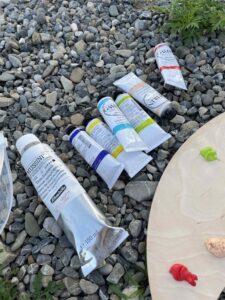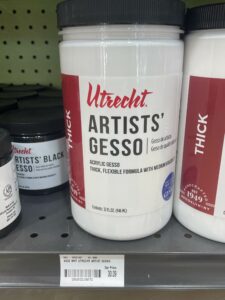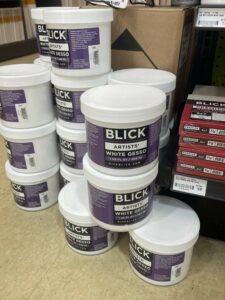If you want your work to be archival, it’s recommended to use gesso if you are making a painting with house paint. However, it’s not a requirement and some choose not to use it.
Do I need to gesso when using house paint?
If you choose to use house paint as a primer for your canvas, you do not necessarily need to apply gesso. House paint can serve as a primer on its own. However, it’s important to be aware of the potential differences and considerations:
Advantages of Using House Paint as a Primer:
- Cost-Efficiency: House paint is generally more readily available and less expensive than artist-grade gesso.
- Color Variety: House paints come in a wide range of colors, allowing for unique and creative priming options.
- Potential Texture Effects: Some house paints have different textures that can create interesting effects on the canvas.
Considerations:
- Absorbency and Texture Differences: House paint may have a different texture and absorbency compared to gesso, which could affect the way your paint interacts with the canvas.
- Flexibility and Longevity: House paint may not be as flexible or durable as artist-grade materials, which could lead to cracking or peeling over time.
- Acidity and Chemical Composition: Some house paints may have a different pH level or chemical composition compared to artist-grade materials, potentially affecting the longevity of your artwork.
If using house paint as a primer, follow proper application steps, ensure sufficient drying time, and consider additional coats if needed. Choose high-quality paint suitable for your surface. Your choice between gesso and house paint depends on your preferences and desired effects. Personally, I opt for house paint due to its cost-effectiveness and simplified process. I start with a thinned coat for better absorption and canvas tightening before applying heavier layers.
What happens when you paint without using Gesso?
When you paint on an unprimed canvas without using gesso, several things may occur:
Uneven Absorption:
The canvas fibers can absorb the paint unevenly. This means some areas might soak up the paint quickly, while others might repel it, resulting in a patchy or streaky appearance.
Less vibrant colors:
Without a primer, the paint may not adhere as well to the canvas surface. This can lead to colors appearing less vibrant and more subdued compared to when applied on a properly primed surface.
Weakened Canvas Fibers:
Over time, paint can wear down the natural fibers of an unprimed canvas. This can lead to the canvas becoming brittle and potentially compromising the structural integrity of the artwork.
Potential Damage to the Canvas:
Acrylic and oil paints contain pigments and binders that can be acidic. Over time, they may react with the canvas fibers, causing them to weaken, yellow, or become brittle.
Difficulty Achieving Fine Details:
A primer, like gesso, provides a smoother surface for painting. Without it, achieving fine details can be more challenging, as the canvas texture may interfere with precision.
Increased Absorption of Mediums:
On an unprimed canvas, the paint medium (water for acrylics, solvents for oils) can be absorbed quickly, which may affect the consistency and flow of the paint.
Less Control Over Blending and Layering:
The absence of a primer may make it more difficult to blend colors smoothly or to layer paints effectively, as the surface may not provide the necessary ‘tooth’ or adhesion.
Conclusion
While it’s possible to paint directly on unprimed canvas, using a suitable primer like gesso is generally recommended. Gesso provides a stable, absorbent, and consistent surface that enhances the performance of your paints, improves color vibrancy, and ensures the longevity of your artwork. It also allows for better control and precision in your painting process.


